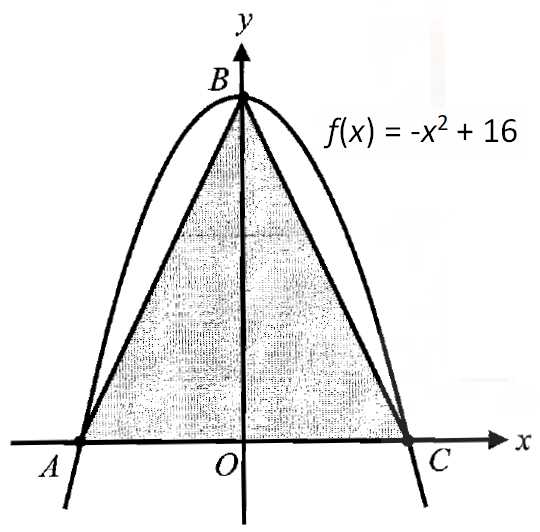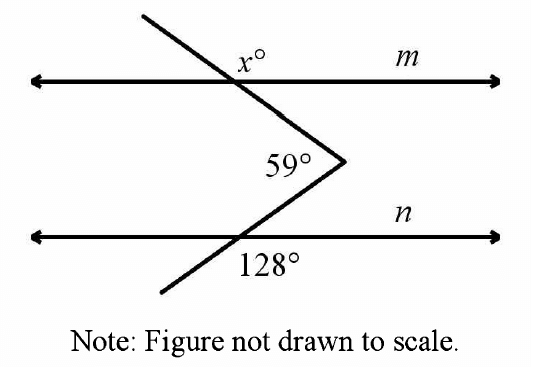ROTATION OF 90 DEGREES ABOUT THE ORIGIN
The rule given below can be used to do a rotation of 90 degrees about the origin.
|
Before Rotation (x, y) |
After Rotation (-y, x) |
When we rotate a figure of 90 degrees about the origin, each point of the given figure has to be changed from (x, y) to (-y, x) and graph the rotated figure.
Problem 1 :
Let F(-4, -2), G(-2, -2) and H(-3, 1) be the three vertices of a triangle. If this triangle is rotated 90° counterclockwise, find the vertices of the rotated figure and graph.
Solution :
Step 1 :
Here, triangle is rotated 90° counterclockwise. So the rule that we have to apply here is
(x, y) ----> (-y, x)
Step 2 :
Based on the rule given in step 1, we have to find the vertices of the rotated figure.
Step 3 :
(x , y) ----> (-y , x)
F(-4 , -2) ----> F'(2, -4)
G(-2, -2) ----> G'(2, -2)
H (-3, 1) ----> H'(-1, -3)
Step 4 :
Vertices of the rotated figure are
F'(2, -4), G'(2, -2) and H'(-1, -3)
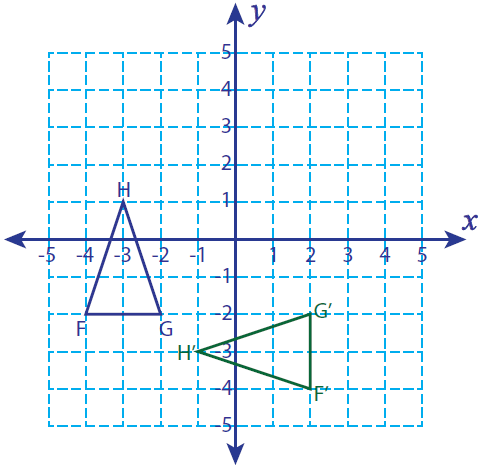
Problem 2 :
Let A(-4, 3), B(-4, 1), C(-3, 0), D(0, 2) and E(-3,4) be the vertices of a closed figure. If this figure is rotated 90° counterclockwise, find the vertices of the rotated figure and graph.
Solution :
Step 1 :
Here, triangle is rotated 90° counterclockwise. So the rule that we have to apply here is
(x, y) ----> (-y, x)
Step 2 :
Based on the rule given in step 1, we have to find the vertices of the rotated figure.
Step 3 :
(x, y) ----> (-y, x)
A(-4, 3) ----> A'( -3, -4)
B(-4, 1) ----> B'(-1, -4)
C(-3, 0) ----> C'(0, -3)
D(0, 2) ----> D'(-2, 0)
E(-3, 4) ----> E'(-4, -3)
Step 4 :
Vertices of the rotated figure are
A'(-3, -4), B'(-1, -4), C'(0, -3), D'(-2, 0) and E'(-4, -3)
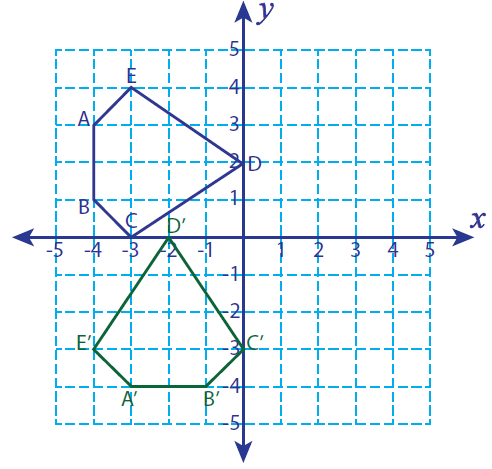
Problem 3 :
Let D(-1, 2), E(-5, -1) and F(1, -1) be the vertices of a triangle. If the triangle is rotated 90° counterclockwise, find the vertices of the rotated figure and graph.
Solution :
Step 1 :
Here, triangle is rotated 90° counterclockwise. So the rule that we have to apply here is
(x, y) ----> (-y, x)
Step 2 :
Based on the rule given in step 1, we have to find the vertices of the rotated figure.
Step 3 :
(x, y) ----> (-y, x)
D(-1, 2) ----> D'(-2, -1)
E(-5, -1) ----> E'(1, -5)
F(1, -1) ----> F'(1, 1)
Step 4 :
Vertices of the rotated figure are
D'(-2, -1) , E'(1, -5) and F'(1, 1)
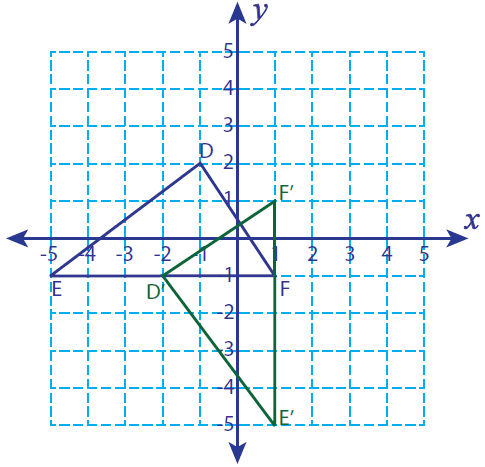
Problem 4 :
Let A(-5, 3), B(-4, 1), C(-2, 1) D(-1, 3) and E(-3, 4) be the vertices of a closed figure. If this figure is rotated 90° counterclockwise, find the vertices of the rotated figure and graph.
Solution :
Step 1 :
Here, triangle is rotated 90° counterclockwise. So the rule that we have to apply here is
(x, y) ----> (-y, x)
Step 2 :
Based on the rule given in step 1, we have to find the vertices of the rotated figure.
Step 3 :
(x, y) ----> (-y, x)
A(-5, 3) ----> A'(-3, -5)
B(-4, 1) ----> B'(-1, -4)
C(-2, 1) ----> C'(-1, -2)
D(-1, 3) ----> D'(-3, -1)
E(-3, 4) ----> E'(-4, -3)
Step 4 :
Vertices of the rotated figure are
A'(-3, -5), B'(-1, -4), C'(-1, -2), D'(-3, -1) and E'(-4, -3)
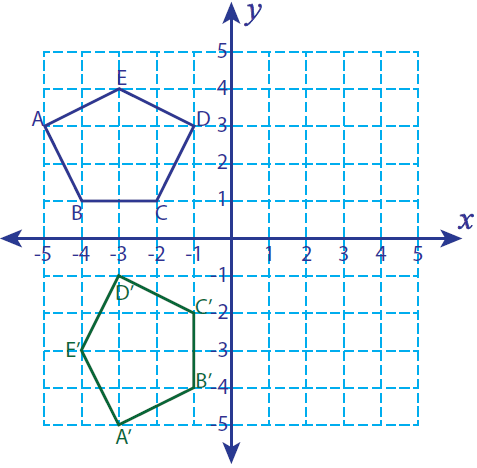
Problem 5 :
Let R(-2, 4), S(-4, 4), T(-5, 3) U(-4, 2) and V(-2, 2) be the vertices of a closed figure. If this figure is rotated 90° counterclockwise, find the vertices of the rotated figure and graph.
Solution :
Step 1 :
Here, triangle is rotated 90° counterclockwise. So the rule that we have to apply here is
(x, y) ----> (-y, x)
Step 2 :
Based on the rule given in step 1, we have to find the vertices of the rotated figure
Step 3 :
(x, y) ----> (-y, x)
R(-2, 4) ----> R'(-4, -2)
S(-4, 4) ----> S'(-4, -4)
T(-5, 3) ----> T'(-3, -5)
U(-4, 2) ----> U'(-2, -4)
V(-2, 2) ----> V'(-2, -2)
Step 4 :
Vertices of the rotated figure are
R'(-4, -2), S'(-4, -4), T'(-3, -5), U'(-2, -4) and E'(-2, -2)
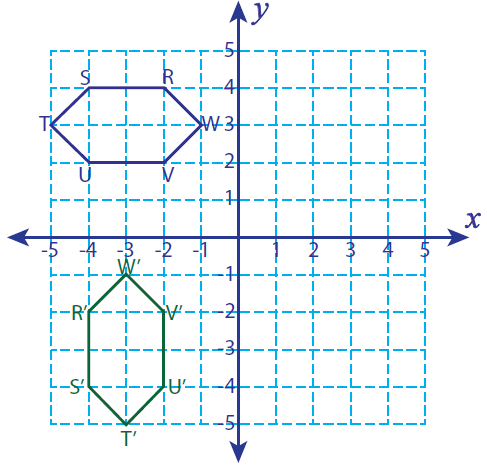
Kindly mail your feedback to v4formath@gmail.com
We always appreciate your feedback.
©All rights reserved. onlinemath4all.com
Recent Articles
-
Digital SAT Math Problems and Solutions (Part - 143)
Apr 13, 25 12:01 PM
Digital SAT Math Problems and Solutions (Part - 143) -
Quadratic Equation Problems with Solutions
Apr 12, 25 08:21 PM
Quadratic Equation Problems with Solutions -
Digital SAT Math Problems and Solutions (Part - 142)
Apr 11, 25 06:26 PM
Digital SAT Math Problems and Solutions (Part - 142)
